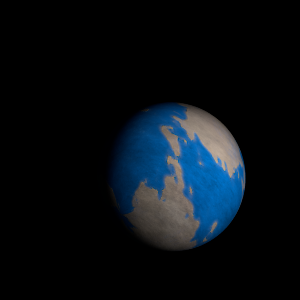|
|
Space Astro
|
Info for exoplanet "Tusle Beb"
| Scientific (actual) data |
|---|
| Name | Kepler-197 Ae |
| Planet status | Confirmed |
| Radius | 0.0827 |
| Orbital period | 25.21 |
| Semi major axis | 0.1598 |
| Orbit eccentricity | 0.38 |
| Inclination | 87.69 |
| Discovered | 2014 |
| Updated | 2024-08-04 |
| Tconj | 2454990 |
| Impact parameter | 0.771 |
| Temperature (kelvin) | 691 |
| Publication | Announced on a website |
| Detection type | Primary Transit |
| Radius measurement type | Primary Transit |
| Alternate names | WISE J194054.30+503332.4 e, Kepler-197 e, KOI-623 e, KOI-623.04, K00623.04, KIC 12068975 e, 2MASS J19405434+5033323 e |
| Star name | Kepler-197 A |
| Right ascension | 295.23° |
| Declination | 50.56° |
| Mag v | 11.77 |
| Mag j | 10.814 |
| Mag h | 10.577 |
| Mag k | 10.535 |
| Star distance | 330.575 |
| Star metallicity | -0.441 |
| Star mass | 1.093 |
| Star radius | 1.2094 |
| Star sp type | G0V |
| Star age | 5.37 |
| Star temperature | 5963.52 |
| Star alternate names | WISE J194054.30+503332.4, Kepler-197, KOI-623, KIC 12068975, 2MASS J19405434+5033323 |
| Wikipedia article | Kepler-197 Ae |
Back
| |
| Fictional info (?) |
|---|
| Suggested name | Tusle Beb |
| Planet type | Planet |
| As seen relative to the fixed stars, it rotates on its axis exactly three times for every five revolutions it makes around Kepler-197 A.
lengthy ride.
The largest moon is dangerous because of the hostile and advanced plants known to feed in the forest by hunting the somewhat smaller "Hyrdraka Ano" if they need to. The Denandat Nand are related to the Tedes but have fur and vary in size from 4 to 7 cm. Most Denandat Nand are able to reproduce at temperatures from -90 to -70°C but are killed by stormy weather which is common on Tusle beb. |
| Estimated population | 40000 |
| Atmosphere | Carbon dioxide | 74% |
| Methane | 25% |
| Oxygen | 0.33% |
| Water | 0% |
| Atmospheric pressure | 0.008 bar |
 |
| Moon | Deuces Parax-tis | Small potato shaped crater-filled moon |
| Google search for Tusle beb |
|
Website by Joachim Michaelis
|
|
|
|